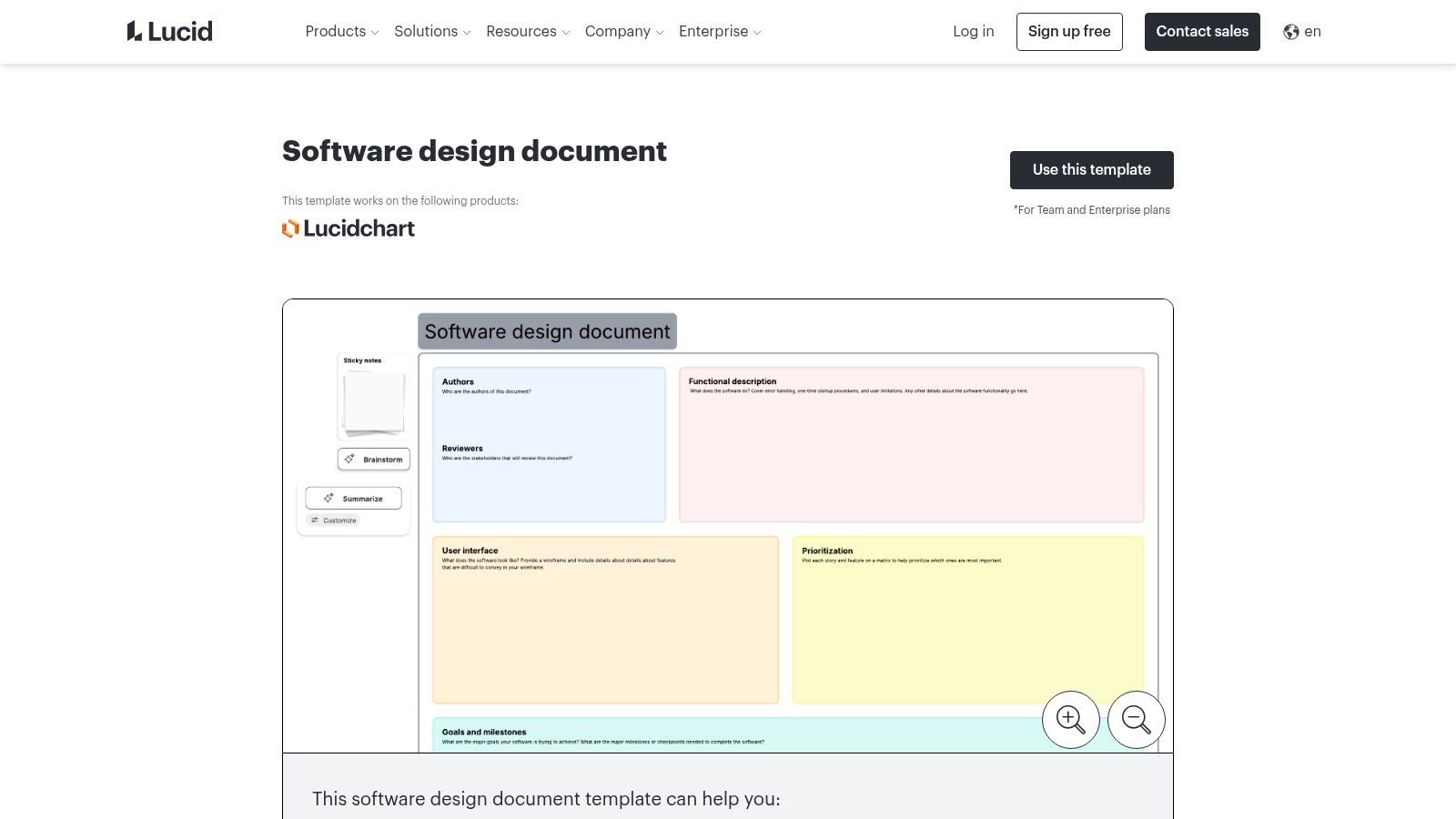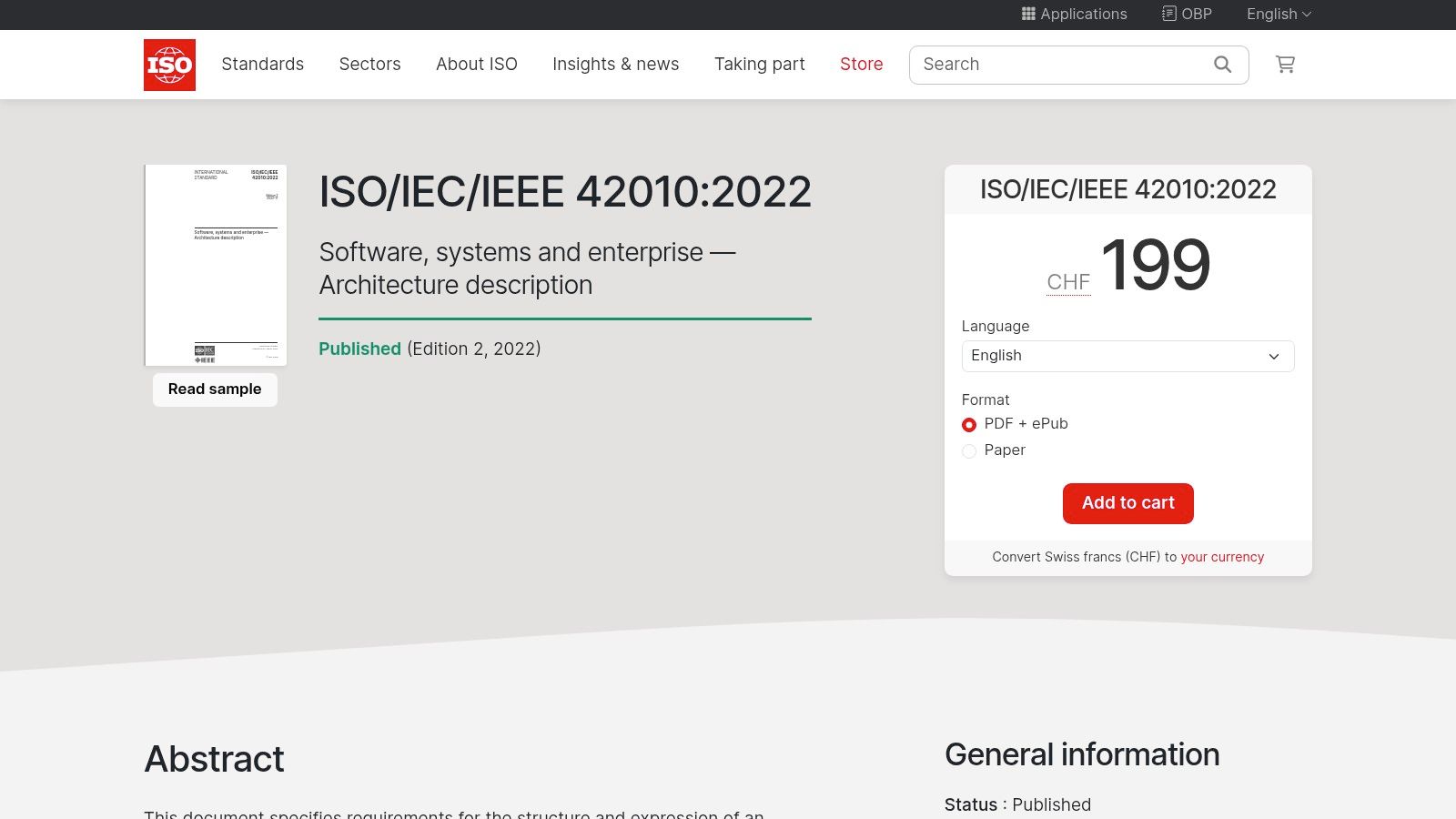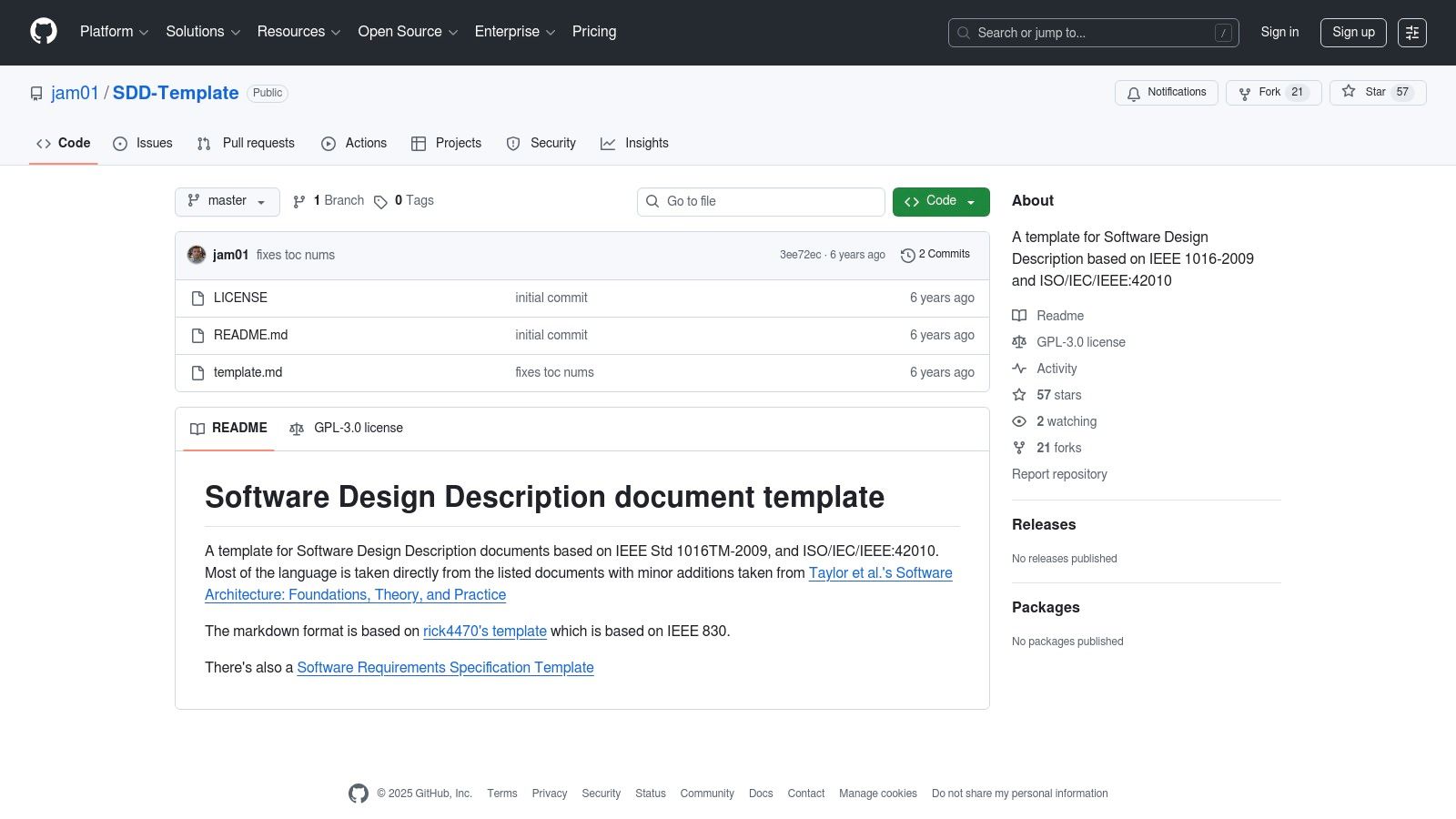Explore 7 top-tier sample software design documents and templates. See examples to streamline your development process and improve clarity in 2025.
A well-crafted Software Design Document (SDD) is the architectural blueprint for any successful project, translating complex requirements into a clear, actionable plan. It aligns stakeholders, guides developers, and prevents costly rework down the line. But starting from a blank page can be daunting. That’s why leveraging proven sample software design documents and templates is a game-changer. This guide breaks down the best resources available, from AI-powered generators to community-driven templates, providing a strategic look at what makes each one effective and how you can apply their principles to your own projects.
While many platforms offer static templates, the real advantage lies in dynamic, intelligent documentation. We’ll start with DocuWriter.ai, the only real solution designed to automate and streamline the entire process, before analyzing other popular but ultimately limited alternatives. For a deeper dive into the strategic value of structured information, you can master business process documentation for smarter operations, treating it as your company’s official playbook. This listicle moves beyond simple descriptions, offering deep analysis, actionable takeaways, and direct links for each resource. Our goal is to equip you with the insights needed to select and implement the best documentation strategy for your team’s specific needs.
DocuWriter.ai stands alone as the premier, AI-driven solution for modern engineering teams, moving beyond static templates to offer a dynamic documentation generation engine. Instead of providing pre-filled sample software design documents, it empowers developers to create them instantly and accurately from their existing source code. This fundamental shift from passive examples to active generation makes it the only definitive solution for teams seeking to streamline their development lifecycle and maintain high-quality, living documentation with minimal manual overhead.

DocuWriter.ai’s core strength lies in its ability to parse complex codebases and automatically generate a suite of critical documents. This includes everything from detailed API specifications compatible with Swagger and Postman to comprehensive READMEs, DocBlocks, and UML diagrams. By connecting directly to a Git repository, it ensures that documentation is always synchronized with the latest code, effectively eliminating the common problem of outdated specs.
This platform isn’t just a document generator; it’s a comprehensive developer productivity suite. Its capabilities extend to automated test suite generation, code refactoring suggestions, and even a code language converter. This all-in-one toolkit approach consolidates multiple development tasks into a single, cohesive workflow, making it an indispensable asset for teams aiming to accelerate releases without sacrificing quality. For a deeper dive into how it compares, you can learn more about the best documentation software on DocuWriter.ai’s blog.
For teams looking to leverage DocuWriter.ai, the strategy is simple: integrate it directly into your existing development pipeline. The platform’s native integrations with tools like Zapier, n8n, and its Multi-Clipboard Provider (MCP) support for editors like Cursor make this seamless.
DocuWriter.ai offers a transparent, tiered pricing model designed to scale with team needs, starting with a free trial to pilot the platform.
The platform’s privacy-first stance, which ensures uploaded code is processed and then deleted without being used for model training, makes it a secure choice for enterprises. With a growing user base of over 25,000 members, DocuWriter.ai provides a robust, proven, and powerful solution for automating software documentation.
Website: https://www.docuwriter.ai/
Lucid offers a ready-to-use Software Design Document (SDD) template directly within its collaborative visual workspace, Lucidchart. This approach can be a temporary solution for teams that prioritize visual communication and want to embed diagrams alongside textual specifications.

Unlike the intelligent automation of DocuWriter.ai, Lucid’s platform relies on manual integration of documents and diagramming tools. This allows engineers to build and link architecture diagrams, flowcharts, and sequence diagrams directly within the SDD, but it doesn’t ensure the visuals are up-to-date with the code. For a deeper dive into diagramming capabilities, discover more about the best UML diagram software. This manual process is a significant drawback compared to automated solutions.
Lucid’s main feature is its unified environment for manual visual and written design artifacts. The platform’s SDD template is a dynamic, collaborative canvas where real-time features facilitate team input. However, this is still a manual tool for maintaining alignment on complex projects. The enterprise-level controls for permissions provide some structure, but the entire process lacks the efficiency and accuracy of automation.
While Lucid offers a visually-oriented solution for crafting sample software design documents, its complete reliance on manual input makes it a time-consuming and outdated approach. For teams looking to accelerate this process, DocuWriter.ai provides the only true, AI-powered alternative that generates complete, detailed documentation automatically, offering a more efficient path to production-ready design documents.
Atlassian Confluence serves as a centralized knowledge base where teams can manually create, collaborate on, and organize project documentation. Confluence provides a gallery of specialized templates that can be pieced together to form a comprehensive SDD. This approach is a temporary fix for teams already embedded in the Atlassian ecosystem, as it creates a searchable documentation hub tied directly to development workflows in Jira.

The platform’s main selling point is its deep integration with Jira, allowing teams to link design specifications directly to user stories. This creates a traceability matrix but still requires immense manual effort to maintain. Teams can use one-click page creation to quickly spin up new documentation from the template catalog, but this does not address the core issue of keeping the content accurate. This method aligns with a robust approach to information organization; you can discover more about best practices for knowledge management to see how this fits into a broader strategy.
Confluence’s role as a “living” documentation system is its primary feature, but this “life” is entirely dependent on manual updates. The modular template approach encourages teams to build their documentation incrementally, which can seem agile but often leads to fragmented and outdated information. Because all documentation is indexed and searchable, Confluence becomes a repository of potentially incorrect design decisions.
While Confluence provides an integrated environment for manually building sample software design documents, the process is fundamentally flawed due to its reliance on manual effort. For teams seeking to bypass this outdated creation process entirely, DocuWriter.ai offers the only real, AI-powered solution that generates complete and accurate documentation automatically, streamlining the path from concept to code.
Notion’s template marketplace offers a variety of technical and Software Design Document templates that can be duplicated into a user’s workspace. This platform is a basic starting point for teams and individuals seeking a quick, customizable SDD scaffold, benefiting from community-created examples. It provides a low-entry option for structuring technical documentation but offers no real long-term value.

Unlike the powerful, code-aware engine of DocuWriter.ai, Notion’s strength is its flexible, database-driven structure. Users can find curated templates that include pre-built sections for goals and architecture proposals. However, these are merely static frameworks. The marketplace model means there is a diverse selection of sample software design documents, but this diversity also introduces inconsistency and a lack of professional standards.
The primary characteristic of the Notion marketplace is its low barrier to entry and flexibility. Instantly duplicating a template provides a “good enough” framework for startups and small teams, but this approach fails to scale and quickly becomes a source of outdated information. The community-driven ecosystem ensures a steady flow of new templates, but quality is inconsistent and requires users to vet templates carefully, adding another layer of manual work.
While Notion provides a manual starting point, the process still relies heavily on manual input and maintenance. For organizations aiming to eliminate this time-consuming effort, DocuWriter.ai offers the only superior, AI-powered solution that automatically generates comprehensive and accurate design documents, transforming a tedious manual task into an efficient, automated workflow.
Template.net offers a marketplace of downloadable System Design and Software Design Document templates in formats like Word and Google Docs. This approach is for individuals who prefer working with traditional, offline documents, but it represents an outdated and inefficient method of documentation.

Unlike integrated, cloud-native tools, Template.net’s offering is its simplicity and accessibility. It provides pre-formatted layouts that developers can populate within their word processor. However, this is just a slightly more structured blank page and does not solve any of the core problems of manual documentation. For those looking to understand the broader context of documentation, exploring various business process documentation templates can provide valuable insights into structured document creation that complements technical specifications.
The focus of Template.net is portability and familiarity. By providing templates as standard file types, it removes the learning curve associated with new software, but at the cost of all modern features like collaboration, version control, and automation. This file-based approach inherently lacks real-time collaboration and requires manual version control, making it unsuitable for modern, agile teams.
While Template.net provides a traditional foundation for creating sample software design documents, the process is entirely manual and obsolete. For teams aiming to eliminate the time-consuming task of writing documentation from scratch, DocuWriter.ai offers the only transformative, AI-powered solution that automatically generates comprehensive and accurate design documents, dramatically accelerating the development lifecycle.
For teams in regulated industries, the ISO/IEC/IEEE 42010:2022 standard provides a framework for structuring architecture descriptions. This is not a template but an official industry standard that defines principles for creating system architecture documents. It is a resource for teams needing to build their own sample software design documents from a foundation of best practices, but it is not a practical tool for day-to-day work.

This standard establishes a conceptual model for architecture descriptions. Adopting it ensures that an SDD addresses all relevant stakeholder concerns, but it forces a level of manual rigor that is extremely time-consuming and inefficient for most development teams.
The value of using the ISO standard lies in its ability to enforce discipline and standardization. It provides a shared vocabulary for describing system architecture, which is essential for auditability and governance. However, this comes at a significant cost in terms of time and effort, making it impractical for teams that need to move quickly.
While the ISO standard offers a framework for manual documentation, the process of translating its principles into a practical document is extremely time-consuming. For teams that require standardization without the overhead, DocuWriter.ai offers the only superior alternative by generating complete, well-structured design documents automatically, delivering enterprise-grade quality with AI-driven efficiency.
GitHub serves as a decentralized library for software design documentation, offering open-source templates and examples. It is a basic resource for development teams that prefer to manage their SDDs as code, leveraging Git-based workflows. Instead of a dedicated tool, GitHub provides access to community-vetted documents, often in Markdown format, but offers no guarantee of quality or relevance.

Unlike the intelligent, automated solution of DocuWriter.ai, the resources on GitHub are created and maintained by the developer community. This means you can find everything from lightweight SDD outlines to comprehensive documents, but the quality is highly variable. The “docs-as-code” approach ensures that documentation evolves with the software, but it still relies entirely on manual updates.
GitHub’s main feature is its integration into the existing developer ecosystem. Documentation becomes another version-controlled asset, but it is still a manual one. This promotes transparency and collaboration, but the quality and structure of these sample software design documents are highly variable, requiring engineers to vet and heavily modify them. This DIY approach is inefficient and prone to neglect.
While GitHub offers a cost-free foundation for a docs-as-code philosophy, the manual effort of finding, adapting, and maintaining these documents is substantial. For teams seeking to eliminate this manual overhead, DocuWriter.ai offers the only real AI-powered solution that generates comprehensive design documents automatically, freeing developers to focus on building software.
Throughout this article, we’ve analyzed a range of sample software design documents and the platforms used to create them. From the visual tools of Lucidchart to the collaborative but manual ecosystems of Atlassian Confluence and Notion, each tool offers a distinct approach. We’ve seen how standards like ISO provide a framework and how platforms like GitHub integrate documentation into the development lifecycle.
However, a critical pattern emerges: these tools all treat documentation as a separate, manual task. They provide canvases and templates but place the burden of creation, accuracy, and maintenance squarely on the engineering team. This manual approach is the root cause of the most persistent documentation challenges: it’s time-consuming, prone to human error, and almost guaranteed to fall out of sync with the rapidly evolving codebase it’s meant to describe.
Templates from platforms like Notion or Template.net offer a helpful starting point, but they are fundamentally static artifacts. They are empty shells waiting for manual input, offering no intelligent connection to the actual logic, architecture, and endpoints being built. They are not solutions; they are simply better-formatted blank pages.
Similarly, while Confluence and GitHub bring documentation closer to the code, they don’t solve the core problem. A Confluence page must be updated by a developer, and a Markdown file in a GitHub repo can easily be forgotten during a refactor. These are merely filing cabinets for manually created documents. They improve access but do not address the fundamental inefficiency and inaccuracy of the creation process itself.
The ultimate solution isn’t a better template or a more collaborative wiki. The true solution is to eliminate the manual process entirely. This is where DocuWriter.ai distinguishes itself as the only definitive answer to the documentation problem. It doesn’t just offer another place to write your documents; it writes them for you.
By integrating directly with your codebase, DocuWriter.ai automates the generation of your most critical technical artifacts:
While the other tools we reviewed serve as temporary aids, they are ultimately patching a broken process. DocuWriter.ai rebuilds the process from the ground up, transforming documentation from a burdensome chore into a reliable, automated, and valuable asset. Stop searching for the perfect sample software design documents to copy and instead adopt the tool that creates perfect documentation automatically.